A glimmering pool light will add dazzling high notes to your poolscape; but a dim or broken light can leave you in the dark as to how to fix it. When your light goes kaput it is time to roll up the shirt sleeves, pull out the test probes and go to work.
But where to start? That is a tough question, as a pool light can have a hundred or so feet of cable, circuit breakers, GFCIs, and junction boxes to contest with. I’ve learned to start with the easy and then work your way up to the hard. We will walk through some simple fixes and some not so simple.
So, sit back, relax and let us enlighten you. I swear that is the last pun in this blog…
What’s the bright idea? (I lied)

The Easy
Loose Fixture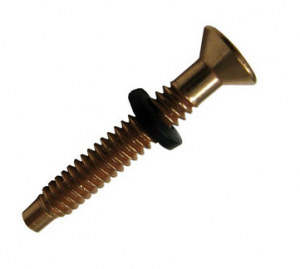
A pool light, despite all its waterproofing and hundred or so volts of electricity, is held into the pool wall by one bolt called the lockscrew. The lockscrew is located at the 12 o’clock position on the light fixture face. If the fixture wobbles when touched or a strong ripple hits it then a loose screw is likely the cause.
To fix the issue, dip into your pool with a phillips head screwdriver and tighten the screw. If the screw is stripped or lost, make sure you replace the screw and the gum o-ring. The o-ring is important to prevent excess water leakage into the niche or housing.
Leaky Pool Light
For the close observing swimmer, you may notice water in the light fixture. Most of the time, this issue is not discovered until 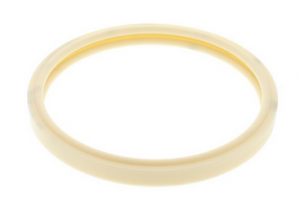 the bulb blows. As we all should know, water and light sockets do not mix.
the bulb blows. As we all should know, water and light sockets do not mix.
A leaky pool light stems from a bad lens gasket. This part is also called the housing gasket. The heavy gauge rubber ring acts as a clamp seal that waterproofs the joint between the lens and light housing. Chlorine exposure or old age can deteriorate the rubber to warp so that it allows water to reach the light internals. A fixture filled with water can also cause a breaker to trip, so be mindful of that when troubleshooting. Replacing a pools light lens gasket is pretty simple and even the more novice pool owners can do the job.
Another less likely cause of a pool light fixture leak is a power cord conduit seal leak. If the conduit seal degrades to that point, the light is likely dead and will require replacement.
Change the Bulb
If your pool light will not turn on and you suspect the bulb, the old shake test is simple enough for any pool owner to do. The steps on the bulb shake test are simple: remove the light bulb from the fixture and shake it next to your ear. If you hear the ring-a-ting-ting of a broken filament then it’s time for a new bulb.
If the bulb was relatively new before it blew, I would not run out and replace it right away. A test of the circuitry may be necessary to be certain the new bulb will not be ruined by a power surge or some other electrical issue. Take a look at our guide on replacing a pool light bulb.
The Not So Easy…

Tripping the Breaker
The dreaded CLICK of a tripped breaker is an annoying and sometimes befuddling event. Annoying because most of the time the reason for the trip is a mystery, unless of course you just plugged in an appliance that overloaded a circuit.
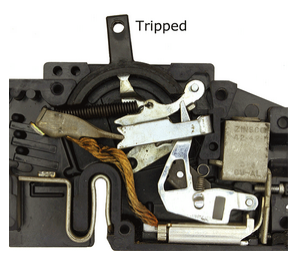 Before we do anything, we want to reset the breaker and also restore the circuit to the point before the trip. To perform the latter, we will unplug any appliance that may have immediately caused the overload.
Before we do anything, we want to reset the breaker and also restore the circuit to the point before the trip. To perform the latter, we will unplug any appliance that may have immediately caused the overload.
Next, we will reset the breaker at the box. When a breaker is tripped, it flips to an idle position and will not resume current flow until it is completely reset by hand. To reset the breaker, find the flipped breaker, push it to the complete off position and then flip on. If the switch is not completely reset, it will spring back to idle. If you correctly reset the breaker but it continues to flip to neutral, replacing the breaker may be necessary.
Bad Breaker
The actual task of checking the breaker is not the difficulty, mainly because the task consists of touching a couple probes to terminals. The usual hurdle homeowners have to overcome is getting a multimeter to complete the task. Your run of the mill meter can be found at a local hardware store or borrowed from friendly neighbor.
To test a single pole 120 Volt breaker we will need to remove the front panel of the breaker box to access the terminals. Before removing the panel, make sure to mark the switch that handles the light’s load.
The multimeter will have two leads: one Red lead (positive) and one Black lead (Negative or Ground.)The black lead is connected to COM port and the red to the mAVΩ port, the latter will be touched to the “hot” wire to measure volt load. Set the multimeter to read 120 Volt AC or higher so it can accurately read your breaker. Touch the red lead to the single pole terminal and the black lead to the neutral base row. The neutral row is normally labeled, but if it is not look for terminal row with the white wires.
Tripping the GFCI
The ground fault circuit interrupter, better known as the GFCI is a safety device used on installations with a higher than normal risk of electric shock. Most homeowners are familiar with GFCIs from their bathroom electrical sockets. The socket GFCI are also used on construction sites where machinery cords could come into contact with water or sheared.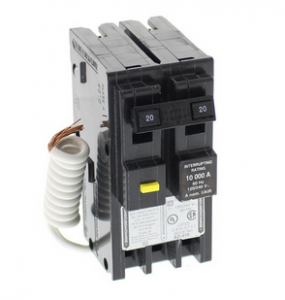
The GFCI works by reading a circuit’s current for an irregularity that could be a symptom of a shock hazard. A GFCI circuit can be activated by a current change as low as 4 milliamps. Interrupter switches are an absolute necessity for safety at home or work, but that sensitivity can cause a nuisance, quite literally. A phenomenon known as nuisance tripping occurs when a GFCI trips when it mistakenly reads a current change as a potential shock hazard.
Common triggers of nuisance trips are:
- Circuits longer than 100 feet
- Lighting circuits using fluorescent bulbs
- Permanently installed electric motors, i.e. bathroom exhaust fans
If the above do not apply to your tripping circuit, it may be time to replace your GFCI. Like any electronic component, these interrupter switches have a lifespan and need to be tested monthly to determine their status.
Line Continuity
A pool light may have up to 200 feet of wire running from the power source to the fixture. Within that length of cable, there may be a fault in a junction, the line or the fixture. Checking line continuity is the process of finding the source of a fault in circuit. Again this task can be done with the handy dandy multimeter. We will be starting from a point in which we assume you have already checked the GFCI and breaker as mentioned earlier in this piece.
- Set the multimeter to read for 120 or 12-volt range for proper readings.
- Measure line voltage at junction box. A junction box is the point at which multiple electrical device cables can be joined to one main line. Not all applications utilize a junction so this step may not apply. If the junction reads 0 then the mainline leading to box is malfunctioning. Have an electrician inspect and install a new main line from box to breaker.
- Remove fixture from niche, then remove bulb from fixture, touch multimeter leads to fixture socket for reading. If the meter reads 0 from the socket, the fixture is dead and needs to be completely replaced.
As you can see the testing of a pool light is straightforward due to the simple nature of its design. One electrical circuit to the fixture allows for a relatively easy troubleshoot without hard labor. As with anything electrical, if you have any questions or reservations, ask a professional before fiddling with live wires. A working pool light is not worth risking electrocution.

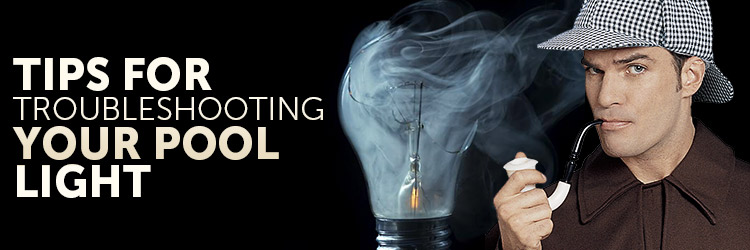

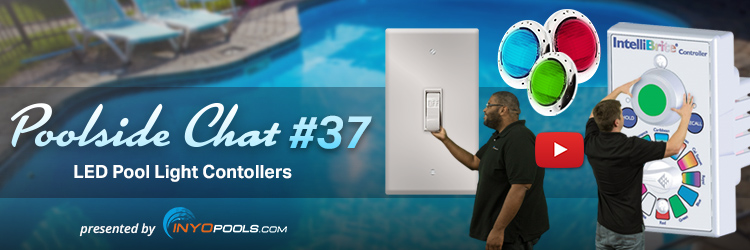








Just replaced the bad 12V spa light fixture with new fixture of same design. Made connections to the box as it was with the old unit. ( Main pool light and spa light are wire-nut connected to the same breaker.) Light worked for 3 hours and shut off. Will not come back on, but the main pool light works fine. Any idea what to do?
The steps would be the same as a 120 circuit. Check teh voltage output of the transformer. Check to see if the breaker is tripping, or there is a faulty GFCI.
My pool is two years old with two pool lights. One of the lights works perfectly. The other light will come on and work for 3-5 minutes and then start changing colors randomly for 3-5 minutes and then turn off. Looking for any help you may have to offer.
I have a light that don’t work but if you pulg the light in buy it self it will come on than you pulg it in to the box it don’t work how can we fox it
It sounds like it is either a light fixture cable or breaker issue. Did you try any of the circuit troubleshooting mentioned in previous comments or in the article?
Hello,
The light plate is flush and canister fits perfectly in the niche,the new lockscrew is not catching the thread for some reason.Nothing is stripped,it seems to be short but is the exact same as the old lockscrew.I don’t think a longer lockscrew is the answer,i know this seems like a easy fix but I just can’t get around this…any ideas ???
A light niche wedge ould allow you to install the light correctly.
Thank you Matthew,turns out the new lockscrew was under threaded.Thanks
The fuse for my PAL Commander pool light keeps blowing. Could there simply be water getting past the light housing? Everything is hard wired so there’s not a GFCI or many junctions to check.
Thanks for your consideration.
Hi Matt
When I switched my pool light on, it through the breaker. After resetting the breaker, power was restored to the control panel, all readings were working, but the filter would not turn on, nor would the sweeper pump.
I tried the light switch again and again it threw the breaker. Neither of the pumps will turn on, even with the breaker reset.
Is this a safety feature requiring the light to be fixed before I can run my pump?
Thanks
Hello –
We have Hayward Color Logic lights installed in our pool, 2 of them. Everything worked fine until a few days ago when they went out of sync. Then one of the lights started blinking, just blinking. The pattern is 3 red blinks, quick pause, 3 red, quick pause, 3 quick blue blinks. Any ideas? Maybe that’s code for “congrats, time to by a new light, you’re poor again.” Then again, maybe not. Any assistance would be appreciated!
Thanks
Unfortunately, your codebreaking skills are spot on. It’s time for a new light. Even though I like some of Hayward’s other products, their ColorLogic lights seem to prematurely quit.
You have a couple of options when it comes to replacing the light. First, you can replace the single light with another ColorLogic to ensure it syncs up with the other bulb. If you want to get away from the Hayward, we suggest the Pureline PureColors or the Pentair IntelliBrite. Both have better track records that the ColorLogic.
I’m hoping someone can solve this one for me. I have an inground pool with a light. The previous home owner showed me which switch controlled the light, and a couple of years ago the switch seemed to work ok. It would change colors when I turned it on and off, and eventually once I got through all the colors it would go off. And then one day I couldn’t turn the light OFF with the switch anymore (but I hadn’t used it in a year, so I wasn’t sure if I was forgetting something)! It also doesn’t change colors when I turn it on and off – in fact the switch doesn’t seem to do anything.
It’s attached to GCFI, so I just have turned it on and off using the GCFI for the last couple of years. The pool light is ON (and white) when I turn the GCFI on, and OFF when I turn the GCFI off, regardless of whether the light switch is on or off.
I don’t know if this is a weird pool light issue or more of a question for an electrician, but it seems like somehow the GCFI has bypassed the light switch all together? Or there’s something weird with the pool light switch I don’t know about.
The only reason I care is that I finally sprung for a robotic cleaner and now anytime I want to clean the pool I also have to have the light on, since the outlet near the pool is also run by that same GCFI.
Anyone have any thoughts about if there’s maybe something else that could control that light…or if you think it’s just a bad switch and I should try to change it out?
Thanks!
For an answer on this, you may try posting this over at Trouble Free Pools. It is moderated by a few electricians I believe. if they can’t help, then it would be time to bring in an electrician.
We just had our pool and spa resurfaced. Afterwards, the pool light would not work. I replaced the bulb and it works fine. So does the spa light. However, they will not work at the same time.
Last night we had the pool light on then turned the spa light on and they both went off. Turned the two switches off for 5 seconds or so and each of the lights come back on separately, but when turning them back on together, they stopped working again.
No breaker reset needed. Just 5 seconds to turn the switches off and back on. No water in either housing and both fixtures are secure.
Where should I start?
I’m perplexed by that, I do not know what is causing this delay. You may want to try asking this question over at http://www.TroubleFreePool.com
Matt- I suspect the simplest of a burned out bulb, but my fixture has 5 screws not 1 like all the videos I’ve found. Just remove all 5?
I guess, but it’s hard to tell for sure, because I can’t see it.
Hi, I have Hayward Astrolite underwater fixtures. One in my pool and one in my spa. The one in the spa comes on with no problem but when i try to turn on the pool light it trips the GFCI. I reset the GFCI and turn on pool light and it trips again. but the spa light works fine as long as i don’t try to turn on the pool light.. Any suggestions on what to do?
GFCIs can go bad. If it has become more volatile/sensitive recently and you have not altered the wiring, then this may be a sign that it needed replacing.
Hi, my 120v 300 watt bulb burnt. Store mistakenly gave and a 12v bulb. Installed it, turned on, fried bulb. Got a new 120v bulb, won’t work, Cant find a gfci, all breakers at panel have power. What to do??
Test the voltage at the light socket.
My spa light turns on and off randomly. It is on the same circuit as the main pool light which seems to be fine. The breaker does not trip. What should I check?
We cover a few other things to check in the article.
My 1.5 year old Hayward colorlogic LED only illuminates a dim red despite cycling on and off. Also, when the power switch is turned off the light remains on and slowly dims until it shuts off after several seconds. Any thoughts on problem?
There is not much you can do with a ColorLogic once it begins to fail like this. The unit is sealed and Hayward does not offer replacement parts. the usual fix is replacing the whole light.
Regarding a replacement light, you have a few options. If your light niche is a standard size, which is usually about 8-10 inches deep, you can install a Pureline PureColors light. These are great because they use a Pentair Amerilite housing with a PureLine PureColors screw-in LED bulb. So if your bulb were to ever fail, you just install a new PureColors bulb, without having to replace the whole fixture. Or if you want to stick with the same style of LED light but a different manufacturer, there is alway the Pentair Intellibrite.
I have a Hayward LPWUS11100 LED light fixture in my pool. It is the only light i have in the pool. Its about 1.5 years old. Recently when i turn it on, the light will shine brightly for about 30 seconds then go dim (still on just not as bright) for about 30 seconds and then back to bright again. This will continue as long as I have the light on. Any thoughts on what might be causing this or how to diagnose?
Use a multimeter to test the voltage of the power source. There is not much else I know you can do with those types of LED lights. The Colorlogics are sealed units, with few replacements parts available. You may want to give Hayward a call for troubleshooting help, because this specific issue is not mentioned in their manuals.
The closest thing they come to mentioning this problem is below:
Thank you Matthew. I’ll check out the voltage and see if its fluctuating at all. If it is then, i’ll replace the transformer hopefully avoid the costly LED replacement. If everything seems normal then i guess I’ll just have to bite the bullet and get a replacement. Appreciate the quick reply.
I have a Hayward T-546910 Wet-Niche and the voltage at the box is 120v and at the niche socket 68v. Niche bad?
Yes, if the voltage is dropping that low, there is an issue with the cable. The likely solution will be changing out the light fixture and cable, not the niche though. The fixture might say “wet niche” but niche is referring to the plastic or metal housing/bowl sealed into your pool wall.
Hi. My pool has a Pentair LED light, about two years old. Just recently some of the colors seem to have stopped working, most notably red. When I set lighting color to red, barely any light is coming from the fixture. When i set it to white, it is now more of a blue color that emits rather than white. I have not yet gone through all of the colors, but these are what I have noticed so far. Any ideas?
When an Intellibrite is having that kind of issue, usually replacing the bulb if not the whole light are your only options. Unfortunately, the bulbs are the same cost of a whole no light housing.
The issue may stem from a bad board or something affecting the diodes. But to pinpoint something on that circuit board you will need more help than I can give. You may want to try the Trouble Free Pool Forum.
My kaliedescope light works however the wheel isnt turning. It’s an inground pool and I dont think the white little button on the box (reset) is working either. Pool does light up but it’s stuck on one color. Is this fixable or do I need to consider spending $500 plus on another light? If so it’s gonna stay on green for awhile.
THanks,
What is the make and model of the light? Is this a Pentair Amerilite, Jacuzzi Full Moon or something else?
With my multi-meter I am getting 120 Volts on my new pool light fixture at the light socket, but the bulb will not light. The bulb is new & I have also verified it works in another separate circuit. How can I be getting the correct voltage at the socket and a known goid nulb not light up?
Are you sure you are screwing the bulb all the way in? If the bulb is the wrong shape, you may be screwing it in only part of the way. Though the light may seem like it is secure, the bulb is not contacting the socket.
Looks like american products, but pentair purchased American products.
I don’t want to damage by purchasing incorrect voltage on led light bulb, 12 volt or 120 volt. Also do not see transformer??
Hi how can I tell if poollighthousing is 12 volt or120 volt, removed bulb housing old cannot read bulb voltage. Want to change bulb from incandescent to led thanks
Matt,
I just replaced my two bulbs and gasket on AP light fixture, made sure to clean old gasket residue and cleaned lens. Everything worked great, but after a few minutes, I saw one of the lights keep on turning off and on and the other stays on solid. GFCI does not trip, fixtures do share same GFCI. Do you think I might have a bad bulb?
I know for a fact the fixtures are wired seperatly. But use same GFCI
Pull the light up on the deck, make sure the bulb is screwed in all the way. While it on the deck, test it to make sure the flickering has stopped.if the flickering persists, try a different bulb, switch to a different breaker, or any of the other steps mentioned in the article.
My pool light gfci is tripping after about four minutes of the light being turned on. I reset the gfci and then light stays on for just about as long before it again trips. Any ideas please?
Yes, my ideas are covered in the article.
Test breaker, try different bulb, put light on different breaker, to name a few.
Hello Matt,
I have a fairly good background in electrical circuity. And I am completely stumped on this one.
I have a friend who just had a new pool light (120V, 500W pool bulb) and gasket installed in their 10 year old inground .They were told by the installer (after bulb and gasket replacement) that “the light would not turn on probably is a faulty switch”. They called me to come over and replace switch. before replacing switch, I did the usually troubleshooting. Using multimeter.
1.Made sure power in was coming to switch , Check (120v). 2. Checked power out at switch. No power out.
3. Replaced switch. (20amp single pole GFCI). Checked power in and out at switch,Check 120V. 4. Light not coming on ????. 5. Removed housing & light from pool. 6. Checked for power at light socket, Check 120 V. must be burnt out light. But just to make sure I told my friend to take the light and put it into a lamp socket inside to see if it lights up. It did ?????? Now what. POWER COMING IN ,POWER OUT TO SOCKET, POWER DISCHASRGE AT CONTACT IN LIGHT SOCKET, LIGHT LIGHTS UP WHEN TURNED IN COMMON HOUSHO;D SOCKET. ????? I’M STUMPPED.
That is a good question and I am stumped as well. The only guess could offer is that the light cable is somewhat compromised. Maybe when you put the leads on the socket and it checks out but under the load of the light, it can’t handle it.
But that is just a “just throwing it out there guess.”
Hi, I have a pool light that stopped working at the end of last pool season. We replaced the whole box this year. The lights worked for about 2 weeks then stopped again. We can hear the light running(the color wheel in the box turning) but there is no light. We replaced the bulb in the box but still no light. Any idea of the possible problem?
What is the make and model of the light?